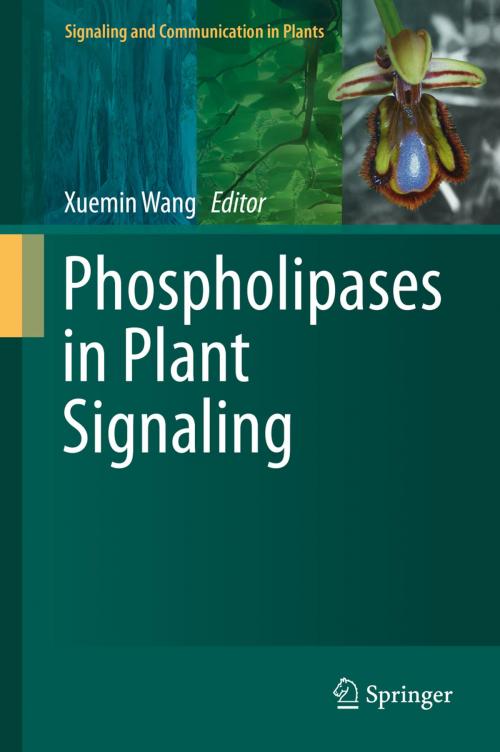Phospholipases in Plant Signaling
Nonfiction, Science & Nature, Science, Biological Sciences, Biochemistry, Botany| Author: | ISBN: | 9783642420115 | |
| Publisher: | Springer Berlin Heidelberg | Publication: | January 8, 2014 |
| Imprint: | Springer | Language: | English |
| Author: | |
| ISBN: | 9783642420115 |
| Publisher: | Springer Berlin Heidelberg |
| Publication: | January 8, 2014 |
| Imprint: | Springer |
| Language: | English |
This volume focuses on recent advances in the biochemical and molecular analysis of different families of phospholipases in plants and their roles in signaling plant growth, development and responses to abiotic and biotic cues.
The hydrolysis of membrane lipids by phospholipases produces different classes of lipid mediators, including phosphatidic acid, diacylglycerol, lysophospholipids, free fatty acids and oxylipins. Phospholipases are grouped into different families and subfamilies according to their site of hydrolysis, substrate usage and sequence similarities. Activating one or more of these enzymes often constitutes an early, critical step in many regulatory processes, such as signal transduction, vesicular trafficking, secretion and cytoskeletal rearrangements. Lipid-based signaling plays pivotal roles in plant stress responses, cell size, shape, growth, apoptosis, proliferation, and reproduction.
This volume focuses on recent advances in the biochemical and molecular analysis of different families of phospholipases in plants and their roles in signaling plant growth, development and responses to abiotic and biotic cues.
The hydrolysis of membrane lipids by phospholipases produces different classes of lipid mediators, including phosphatidic acid, diacylglycerol, lysophospholipids, free fatty acids and oxylipins. Phospholipases are grouped into different families and subfamilies according to their site of hydrolysis, substrate usage and sequence similarities. Activating one or more of these enzymes often constitutes an early, critical step in many regulatory processes, such as signal transduction, vesicular trafficking, secretion and cytoskeletal rearrangements. Lipid-based signaling plays pivotal roles in plant stress responses, cell size, shape, growth, apoptosis, proliferation, and reproduction.















